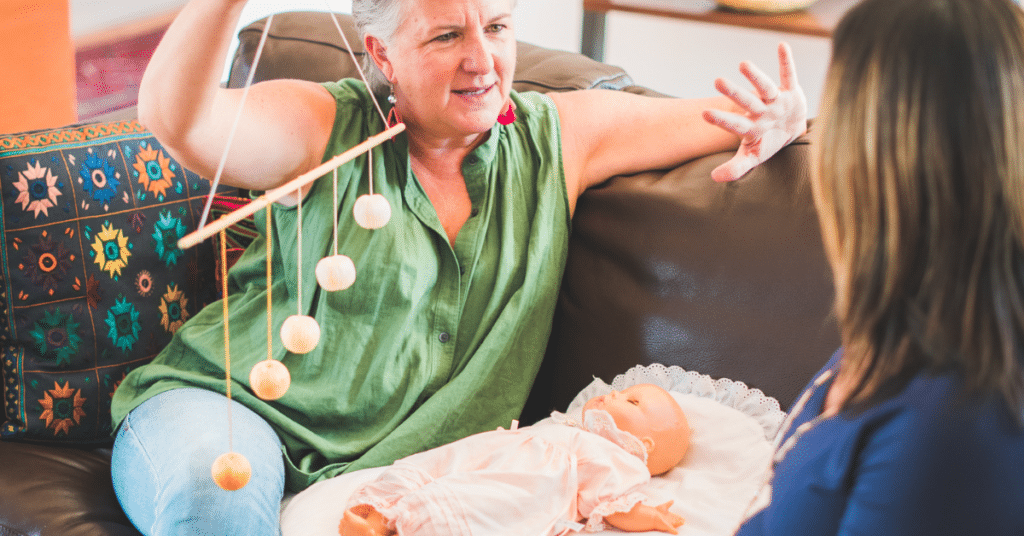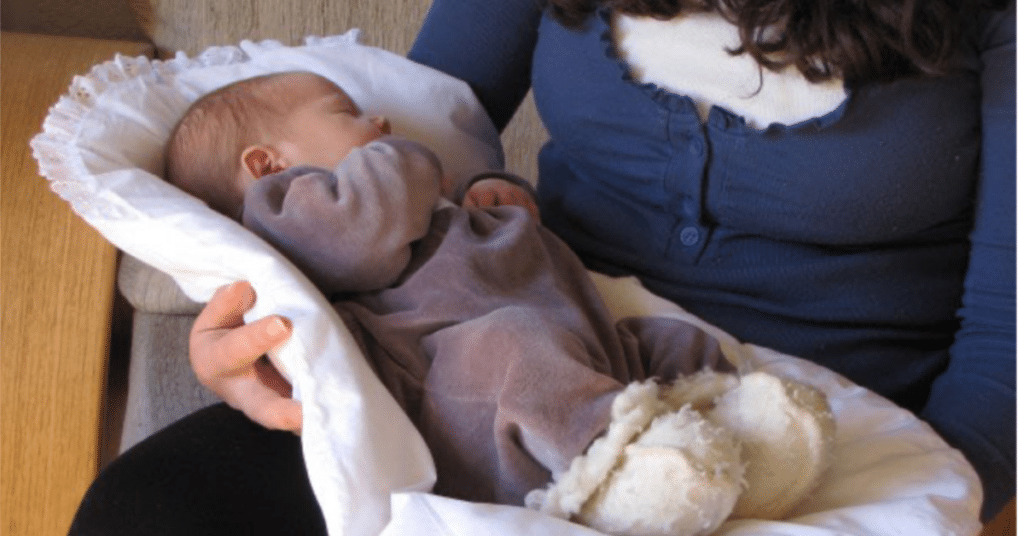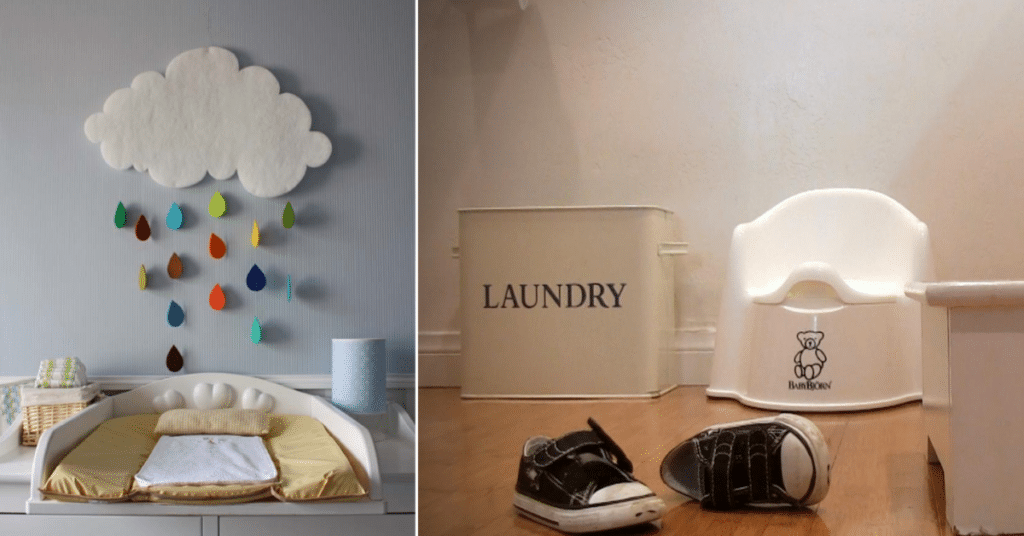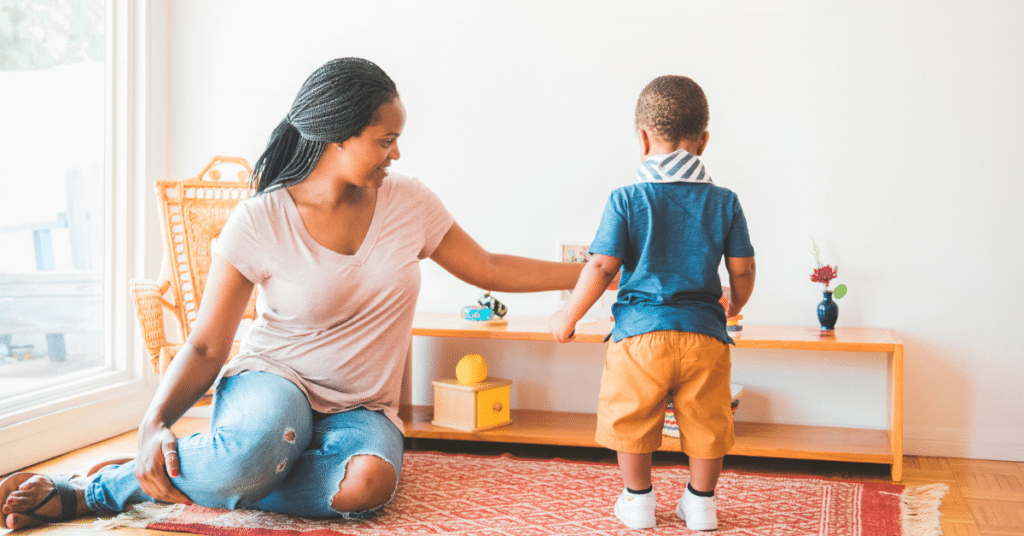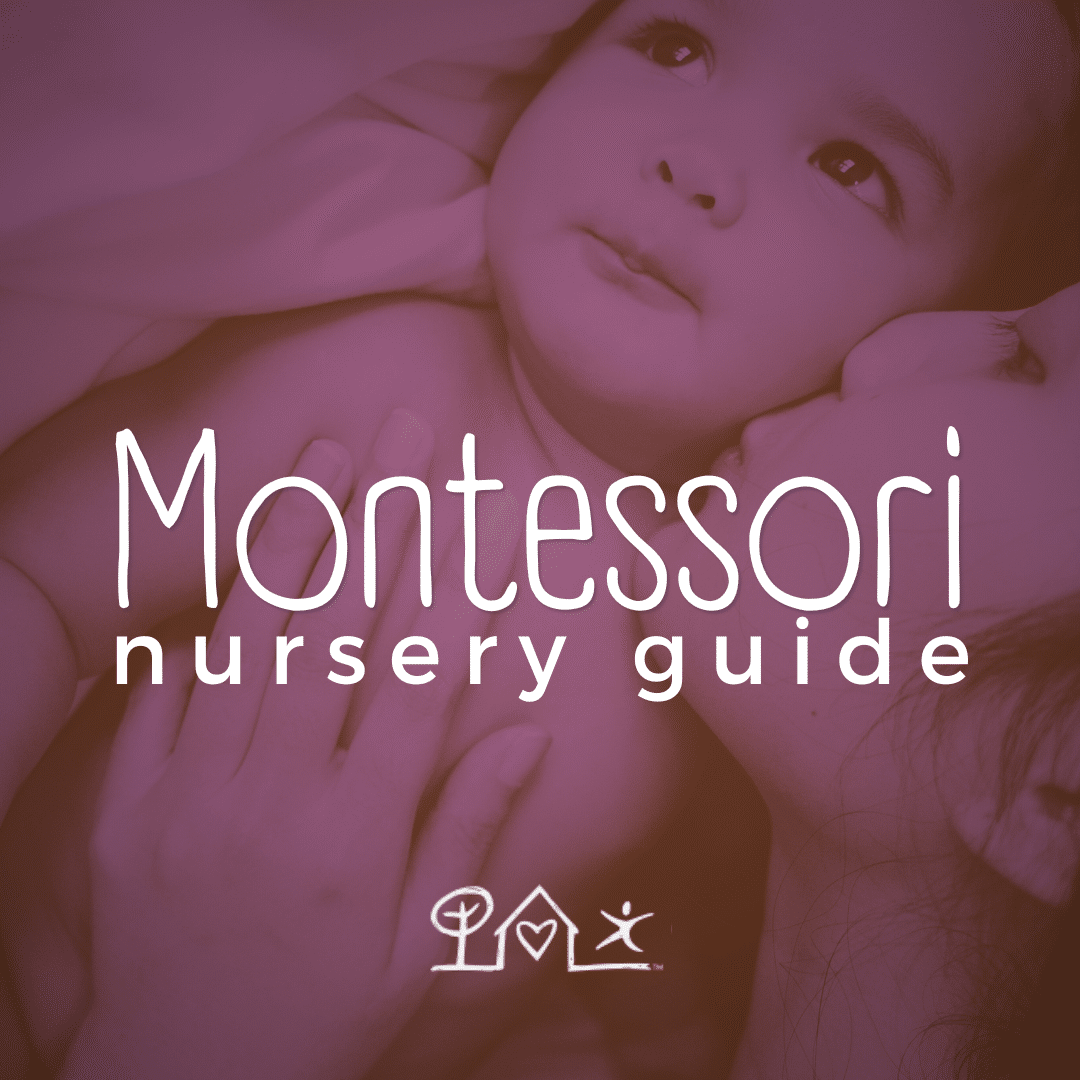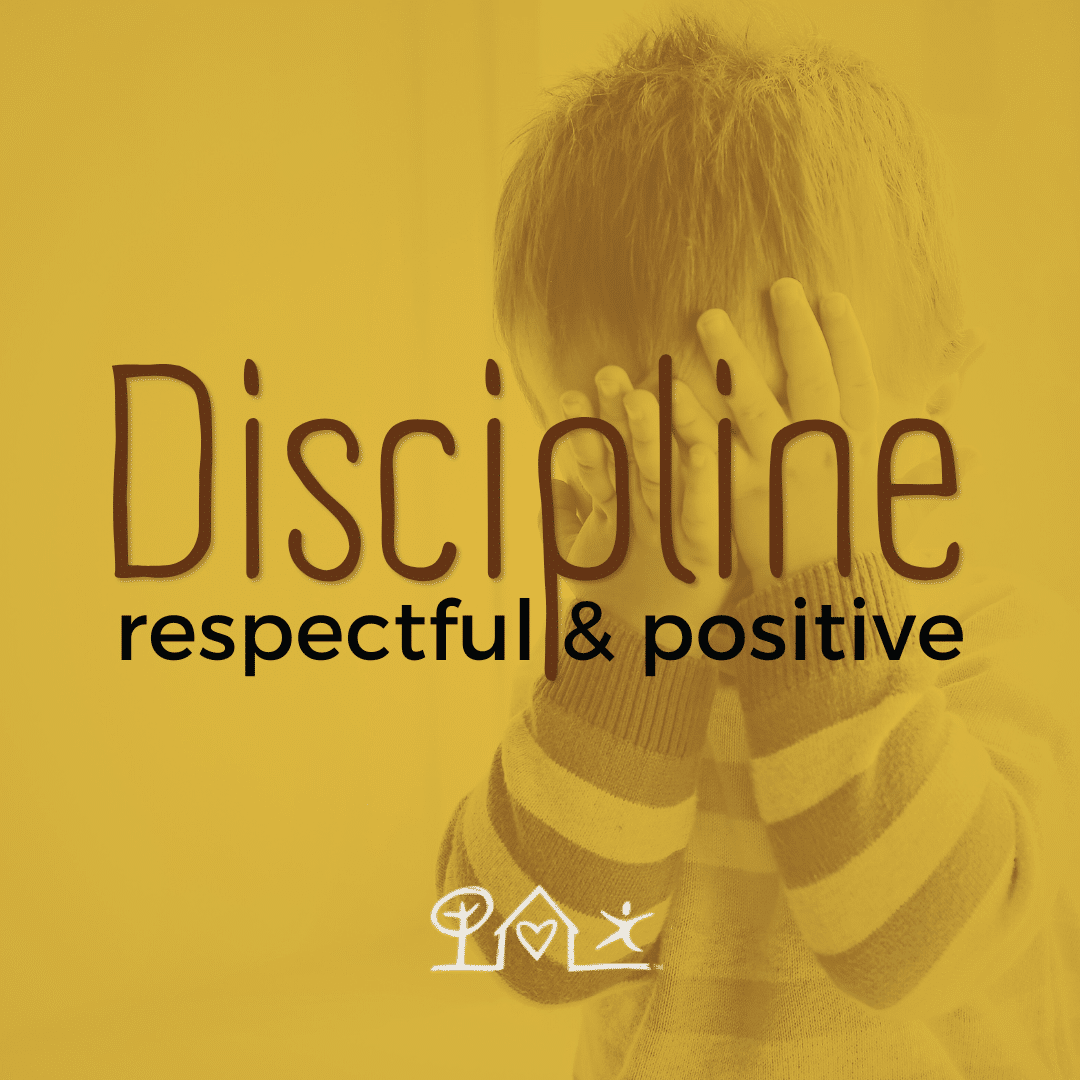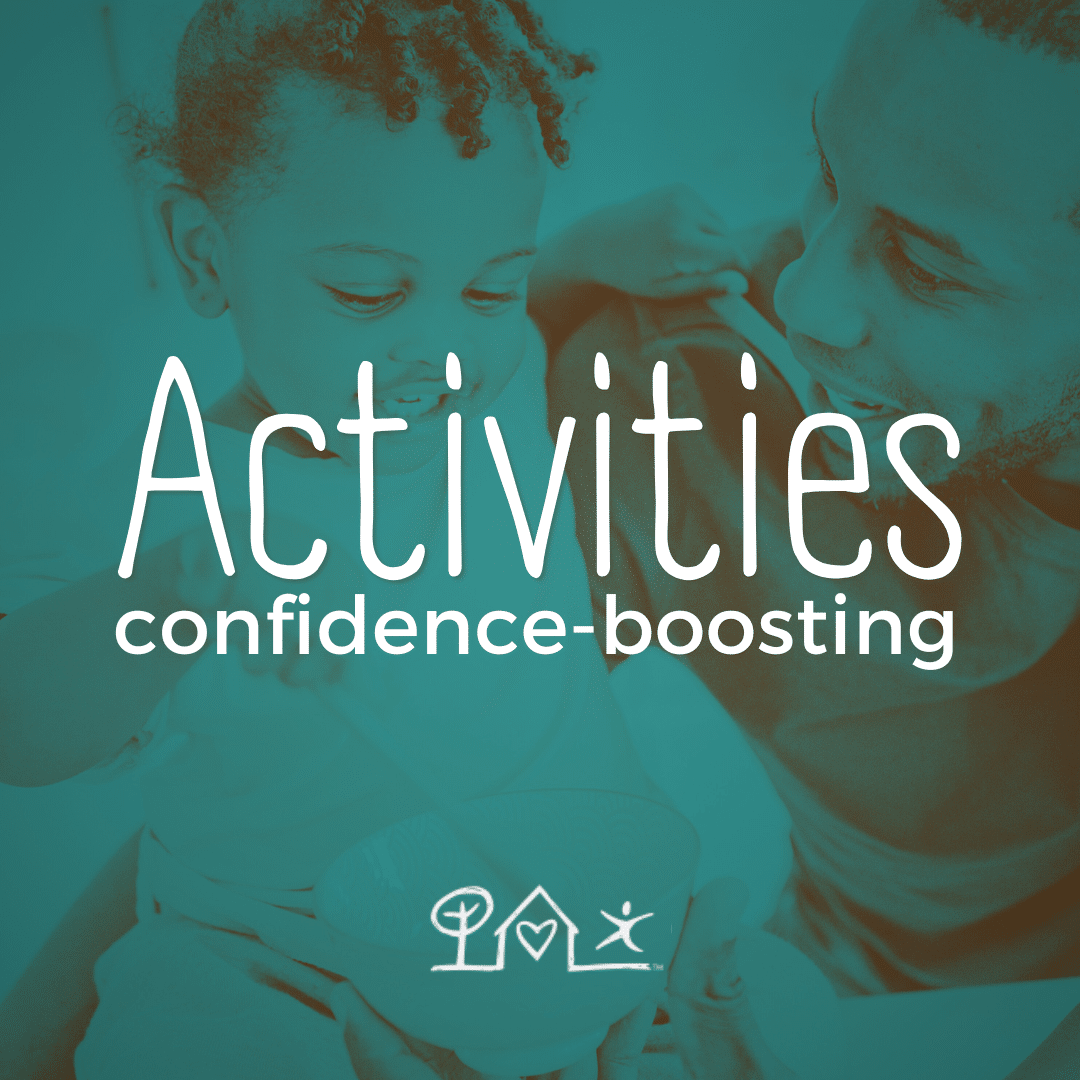It’s neither too late, nor too earlier.
I’m often asked if it is too late or perhaps too earlier to adopt a child-led approach to parenting and education.
I’m referring to the world-renown Montessori philosophy of education and powerful method to paren the next generation.
Of course, I would’ve preferred knowing about it much sooner in my own parenting journey, yet, that is exactly why I’ve embarked on a lifetime mission to make sure you are aware of the benefits of adopting this respectful loving approach to parenting.
Wherever you are on your journey of caregiving, conceiving, educating, parenting, grandparenting, adopting, or fostering.
It’s never too late or too early.
You can start as early as conception and any time thereafter.
The Montessori method is based on the interconnectedness of three important pillars:
- You (the caregiver, parent, or educator)
- the environment (i.e. your home, school, etc.)
- and the child.
You can incorporate its principles into your daily life whenever and wherever you are on your caregiving journey.
In an ideal world, we would all learn about these principles growing up or better yet in our own homes. It’s been around for more than a century, so it’s about time.
My discovery began when I was pregnant with my first child 25 years ago and picked up a book written by Dr. Maria Montessori in 1936 “The Secret of Childhood” (I read the french version “L’enfant”).
Yet it wasn’t until she was eight years old and her brother four that I decided to dive much deeper into understanding the true essence of Dr. Montessori’s work and genius.
It’s never too late.
At the age of 43, I embarked on an invigorating journey of learning and expanding my knowledge to respectfully guide and discipline my children and those of others. Today, I hold a Masters’ in Montessori education, two AMI Montessori diplomas from birth to six years as well my certification to be a Positive Discipline parent and classroom educator.
Dr. Montessori gave us a window into the child’s developing brain and what the universal milestones and needs of children from the time of conception thru early adulthood were. She created an approach based on the notion that we’re all ready and avid to learn and master the skills needed for our own adaptation.
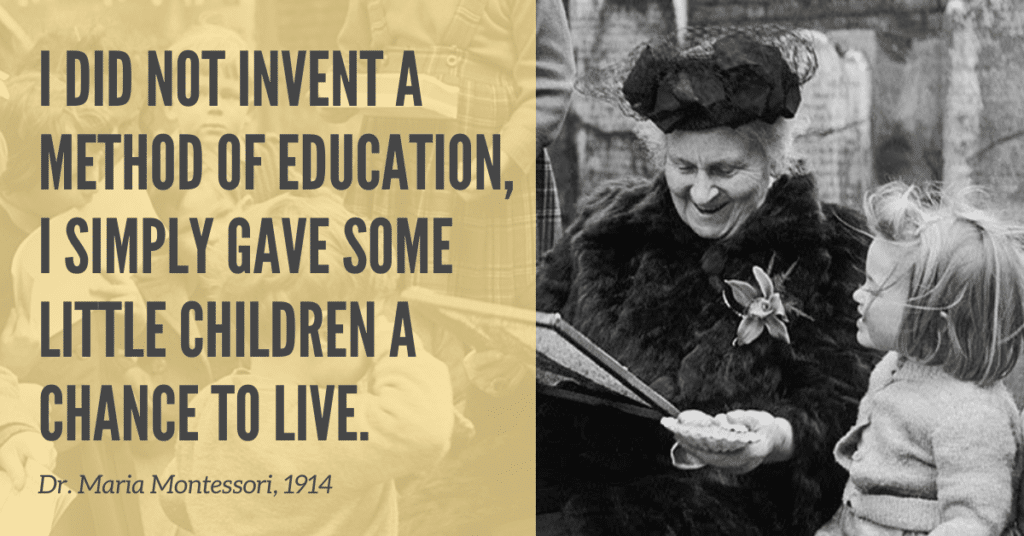
This is our task, your task, to give children a chance to live and the opportunity to adapt to their time, place, and culture with ease.
We’re simply guides.
We’ve just been around a little bit longer and therefore have the responsibility to show them the way, all the while avoiding getting in their way. This is done by observing their curiosity and supporting it with loving-kindness.
So yes, you can start as early as conception.
Because prenatal life in utero is their first environment, the more parents know about giving their unborn child the best and healthiest start the better off everyone will be.
The birth environment and experience is the second environment that you are, more or less, able to control. As birthing parents, you get to choose where and how you want to give birth.
IMPORTANT PERSONAL SIDE NOTE:
- Personally, if I were to do it again (which isn’t possible in this lifetime) I would choose a homebirth with a midwife and doula. I was fortunate to have two healthy pregnancies at 35 and 39, along with two miscarriages in between. Had I known that homebirth was even an option I definitely would have done more research and stayed away from hospitals.
- As life-giving women we are not sick we do not need to be in hospitals. Do your research know what you want, you have a few months to figure it out and it’s an important decision for you and your growing family.
- I’m now a volunteer doula in a hospital setting that has both a birthing center (the closest to staying at home) and a labor and delivery unit. I support birthing families wherever they choose to birth or how they want to give birth. Just know that you have many options, it’s never too late to do your research.
Then comes the child’s home.
We prepare our adult-centric homes for the arrival of our little ones, not always knowing what they’ll truly need to develop their uniqueness and immense potential.
We get caught up in the feeling of cutely-designed nurseries. Yet, so many of them are so far removed from what an infant truly needs. They are beautiful and make us swoon but they are often filled with obstacles for the developing child.
Let us consider what a child from the time of birth truly needs at home.
First and foremost, your loving caring arms, your unconditional love, and the acceptance of who they are meant to be.
You’re the first and most important person to give them “trust in the world” a fundamental pillar for healthy personality development. It is the comfort and reassurance of knowing we’ve been born in a safe, secure environment where all of our basic needs will be met. What we believe about ourselves starts that early.
No need to purchase the latest gadgets that the billion-dollar baby industry has you believing you can’t possibly survive without.
All you need is your arms, your nutritious special ordered milk, and a small group of caregivers that will tend to you.
Again, this is in an ideal world, yet, the first eight weeks are best spent nourishing you and feeding your baby, resting as much as you possibly can, and letting those who care for you do the rest. Yup, all you need to do is love on that baby and let everyone else take care of the cooking, cleaning, communicating, etc.
Your baby needs you to be healthy and in a good mental state, so please make it a priority.
There are a few items you could make while nesting during that last trimester, such as a topponcino, a few mobiles, and some simple grasping toys. Or you can purchase them or add them to a baby registry if that is part of your custom.
The first is a topponcino which is a small oval pillow that comes extremely handy when wanting to transfer a sleepy baby from your arms or having other family members, including eager siblings that want to hold your baby. The topponcino allows the baby to feel secure in its own warmth and scent, just like prenatal life.
A few other items you might want to consider is a cloth diapering service (add it to your registry, if you’re doing one) for the first few months, it’s a game-changer. You’ll also want a few basic newborn clothing and some blankets. No need for too many they grow out of them very quickly and make sure to choose clothing that doesn’t hinder your child’s need and ability to move.
I’ve creates a nursery checklist for you, with the bare minimum for the first year of life. Check it out here.
When setting up your home make sure to prioritize these four areas:
- Sleeping
- Feeding
- Physical Care
- Movement
An invitation to rest and sleep.
How you put your baby down to sleep is a very personal choice. There is no one-way. Do what feels right to you, as long as everyone is getting good restorative sleep and your child is safe. Advice changes over generation and ongoing research, make sure to follow what feels right to you and your family.
At first, you might think that baby is going to sleep in the nursery, but then you end up realizing that having them in your room makes nighttime feeding a lot easier. Or you might have planned to co-sleep from the start but then realize you and your baby are not having it. What’s important is to reassess, tune in and do what works for you and your family.
What I will suggest though, is to not buy a crib.
No need to purchase this overpriced item. It is a container that was developed to appease parents and has no real value for the growing child. Especially not their freedom of movement or their developing visual sense.
What you can do instead is purchase a good quality safe mattress with our without a floor bed frame. Depending on the space you have it can be a crib, twin, or queen size mattress.
Personally, I like the bigger size, we both know that you’ll be taking a few naps with your child, so let it be comfortable for the both of you.
To get a better sense of why the Montessori method recommends the use of a floor bed instead of a crib, read Pilar’s account here. She and her husband were one of my very first prenatal consulting clients.
An invitation to nourishing routines.
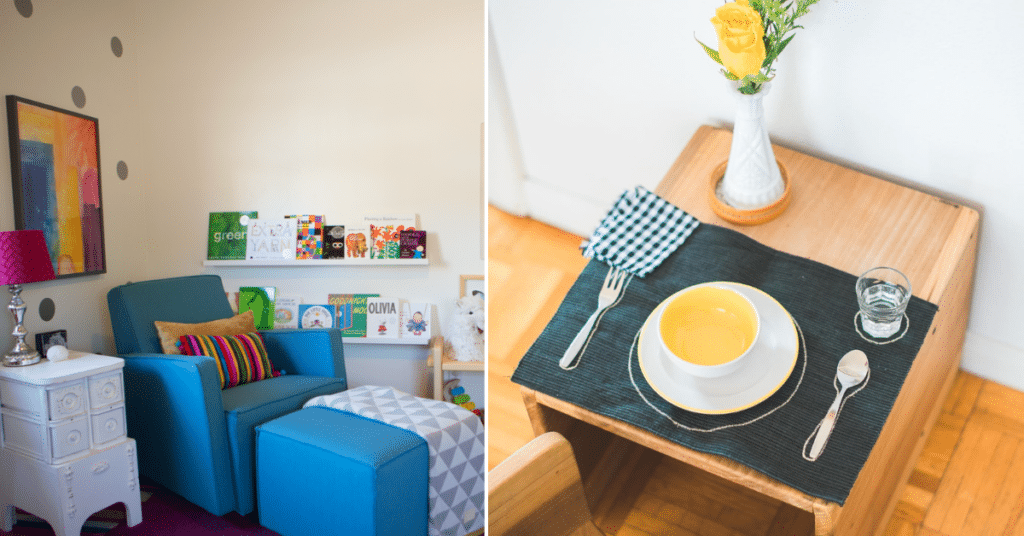
The feeding area is first set up for the caregiver. It is important to create a relaxing area you can comfortably tend to your baby’s needs. It might seem like it’s 24/7 at first, so make sure you enjoy your feeding area. Have everything at arms reach; hydration and nourishment for you, what you need to tend to your breasts or bottles, something comfortable to hold the baby. This is where the topponcino comes in handy, if the baby falls asleep after being fed you can simply set them down directly with their topponcino on their floor bed. To avoid waking them up when being transferred from warm arms to a cold bed.
Once your baby starts showing interest in other foods, you can either set up a weaning table or a quality high chair that comes to the adult table (I loved the Tripp Trapp, which we still have). Try to avoid high chairs with a tray in front of them, which isolates them. Make they are dining with you from the very beginning.
Feeding is an important social interaction and great care should be taken to set up proper routines around family mealtime.
An invitation to respectful care.
Once again the physical care area will essentially be for the caregiver at first. Be sure to set yourself up to be comfortable and have everything at arms reach. It can be on the floor or standing height, you choose. Keep in mind to orient yourself forward-facing while tending to your baby. There are many changing tables on the market that make us tend to our babies in a lopsided way. Look at them straight in the eyes, these are important moments, giving your child a sense of their body schema and image.
Talk to them, let them know what you are doing, ask for permission, be respectful.
Take time to research and learn about EC (elimination communication) you can start here by listening to my conversation with Andrea founder of godiaperfree on The Art of Parenting podcast.
The late Magda Gerber founder of the RIE method states in her 1998 Dear Parent: Caring for Infants with Respect book:
“We not only respect babies, we demonstrate our respect every time we interact with them. Respecting a child means treating even the youngest infant as a unique human being, not as an object.”
Magda Gerber, 1998
Make this area enjoyable for both.
Eventually, this area will be transformed for your child’s self-care needs.
Remember, your home is ever-evolving during the time your children will be living with you, especially the first six years when their developmental needs seem to be evolving daily.
An invitation to move with grace.
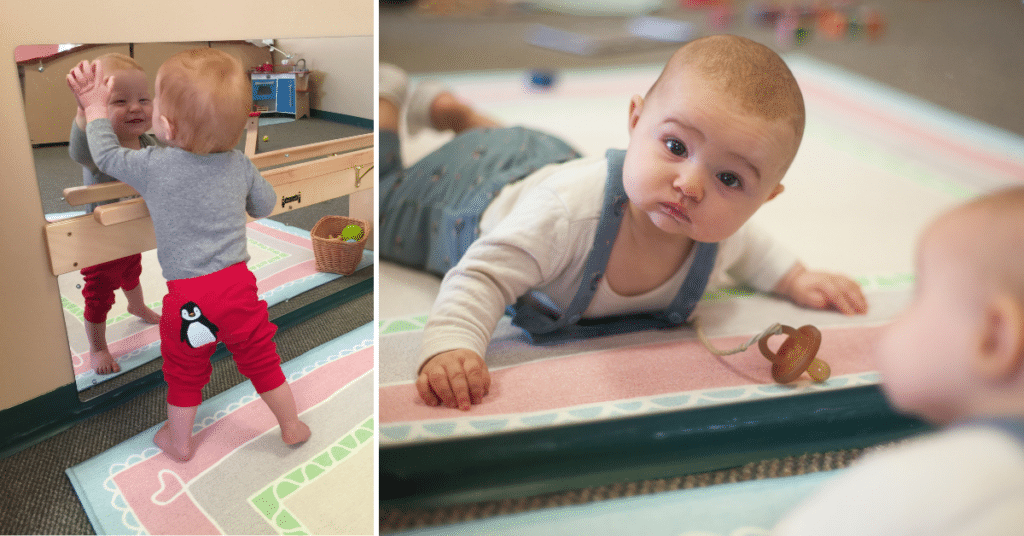
Movement is life and therefore should be encouraged as much as possible from the very beginning.
Get down on all fours, yes crawl around your home, see it from your child’s perspective and reflect on how can you create a Yes environment, where your child can move about safely.
This might mean putting away or up high precious objects for a few years, they won’t be this small forever. And it’s also quite alright to have an adult-only zone if your space permits it.
What is most important at first is to have an area that is full of natural light where you can place your child on a floor mat large enough to move about and discover what their body is capable of. Ideally, place this movement area in a corner so that one of the walls can be used to securely hang a shatterproof mirror from the floor to about 20 inches or 50 cm high.
The mirror is a great way to encourage movement and give your child feedback on their body image and schema. This is also where you can hang some simple nonbattery noise-making mobiles, or have a nontoxic large house plant. All they want is to observe and develop their visual sense. A very low shelf nearby with a few simple grasping toys will help them orient themselves.
Keep it simple, there is already so much for them to take in.
Once the child is sitting up on their own you can place a pull-up bar at arms reach in front of the mirror.
There is something quite special about witnessing a child’s contentment when they can finally pull up on their own and realize they’re standing on their own two feet.
Later when the child is crawling and later walking the entire home becomes their movement area all the more reason to prepare it ahead of time so you’re not stressed about what they may or may not get into.
They are avid explorers, get ready!
Remember it’s never too late or too early to do what’s right for you and your family.
Parenting was never meant to be done alone, know that I’m right here for you, go ahead and book a time to speak with me and learn how I can be of continued support.

